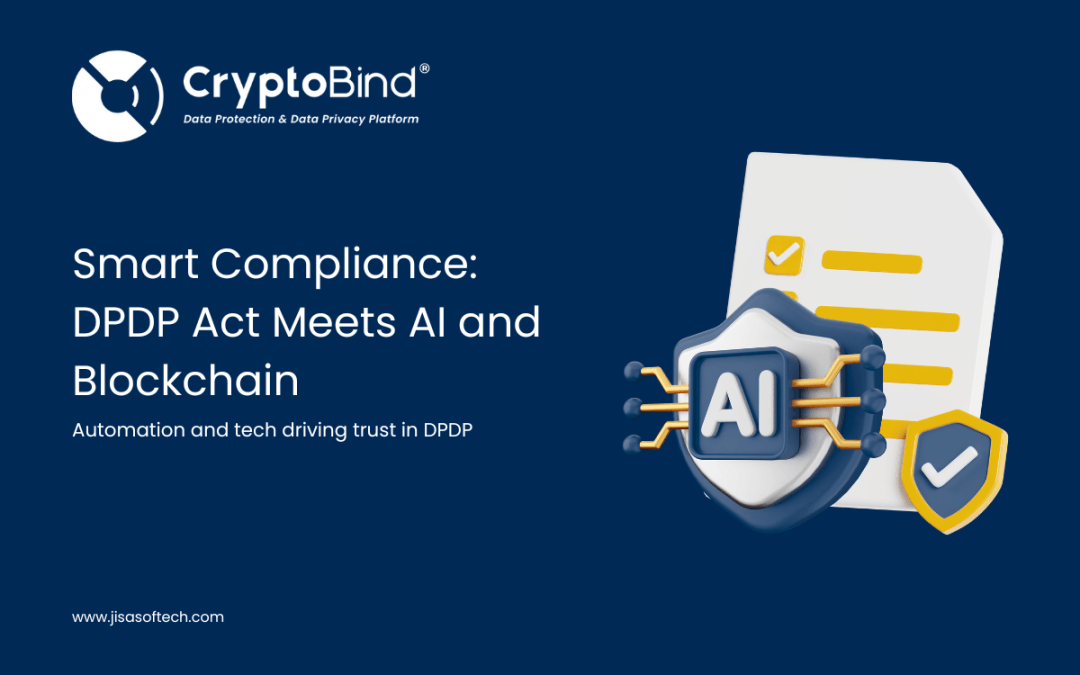The Digital Personal Data Protection (DPDP) Act 2023 has reshaped the approach that enterprises take towards data protection. Compliance can no longer be a reactive practice; it must be smart, agile, and open. Business organizations must operate consent, facilitate early breach alerts, and keep responsibility in ever-more complicated internet ecosystems. The core of this transformation is technology. AI, blockchain, and automation are the keys to integrating privacy into operations, providing resilience, and transforming compliance into a strategic asset instead of a liability.
The Importance of Technology to DPDP Act
The DPDP Act lays emphasis on standards like consent, data minimization, purpose limitation, and breach notification. On the one hand, these principles sound simple, but it is not easy to apply them at the enterprise scale where personal data volumes are large. Paperwork increases the chances of error, delays, and fines. Technology solves these problems. AI is forward-thinking and dynamic, blockchain is impeccable transparency, and automation is efficient. They combined can make compliance more of a proactive system, rather than a reactive need, and create trust.
AI in Compliance
Artificial Intelligence transforms compliance as the processes are no longer reactive but predictive intelligence.
- Consent Management: Records consent on-the-fly in order to enforce legal use of personal data.
- Risk Detection: The data analysis is aimed at detecting anomalies and possible breaches at an early stage.
- Predictive Compliance: See vulnerabilities and gaps in advance before they get out of hand.
AI does not merely allow organizations to be in compliance with the changing risks; it helps them stay ahead.
Blockchain in Compliance
Blockchain presents the concept of trust and transparency because the information is documented in an unalterable and unchangeable fashion. In contrast to the traditional databases, blockchain makes any transaction, whether it is the consent gathering or the data transfer permanent and verifiable. The compliance is reinforced by blockchain having audit trails that can be used by regulators, auditors, and customers. This degree of transparency instills trust and is accountable as per the DPDP Act. Blockchain compliance rules (cross-border transfers, retention, and access by third parties) are automated by the use of smart contracts. The implementation of policies automatically ensures that organizations minimize human error and provide uniformity. The other benefit is decentralized trust. With blockchain, organizations can present verifiable evidence of compliance without the need to use intermediaries and increase the efficiency of their operations.
Automation in Compliance
Automation ensures compliance is scalable and efficient.
- Real-Time Breach Reporting: Identifies incidents immediately and enables triggered reporting workflows.
- Cross-Border Compliance: Defines and implements localization and transfer principles in a uniform manner across jurisdictions.
- Audit-Ready Systems: Records consent, data access, and minimization in real-time, with transparency that is regulator-ready.
Automation expedites, enhances accuracy and cost-effectiveness, and builds confidence among regulators and consumers by minimizing human input.
Challenges in Tech-Driven Compliance
Difficulties in technology-based compliance are inevitable. There are no shortcuts related to the adoption of AI, blockchain, and automation. Assimilation with old IT systems may be expensive, and knowledge base is often insufficient. One should also develop trust in technology: regulators and parties involved should believe that AI is explainable, blockchain records are open, and automated processes are safe and impartial. These challenges can only be overcome by investing in talent, governance, and infrastructure with close coordination among compliance, technology, and risk management teams.
Turning Compliance into Opportunity
Nevertheless, even though the drawbacks are huge, the advantages of AI, blockchain, and automation integration are substantial. These technologies decrease compliance costs, enhance response times, and accountability. Compliance is no longer a protective requirement but an active facilitator of trust, strength, and creativity. Privacy-first operations assist enterprises in standing out in the market in accordance with DPDP Act requirements and emerge as the leaders of secure and compliant digital services.
How CryptoBind Can Help
At CryptoBind, we excel in the correspondence of DPDP Act certification with the latest technology. We offer solutions based on AI-driven consent hubs and breach detection, blockchain-based audit trails, and automated workflows of multi-jurisdiction compliance. These tools are combined to assist enterprises in gaining compliance, improving operational efficiency, and gaining the trust of stakeholders.
Final Thoughts
An intelligent, transparent, and automated future of DPDP Act compliance is built. AI, blockchain, and automation give foresight, trust, and scale respectively. Combined, such technologies give businesses the power to move beyond checklists and infuse privacy into their culture. The companies that will embrace these technologies will not only satisfy regulatory needs but also gain confidence among customers, regulators, and international collaborators. Compliance is not a weight anymore; it is a force of resilience, development, and digital leadership.

